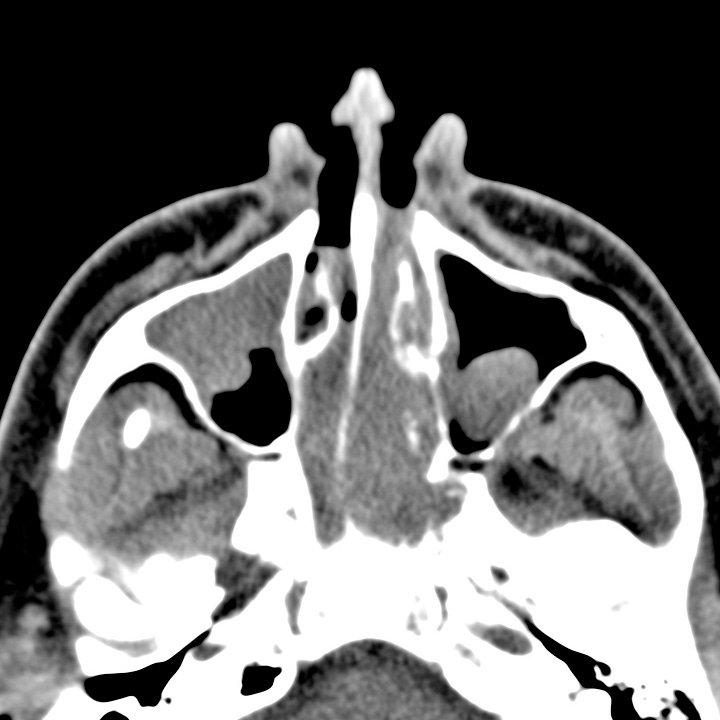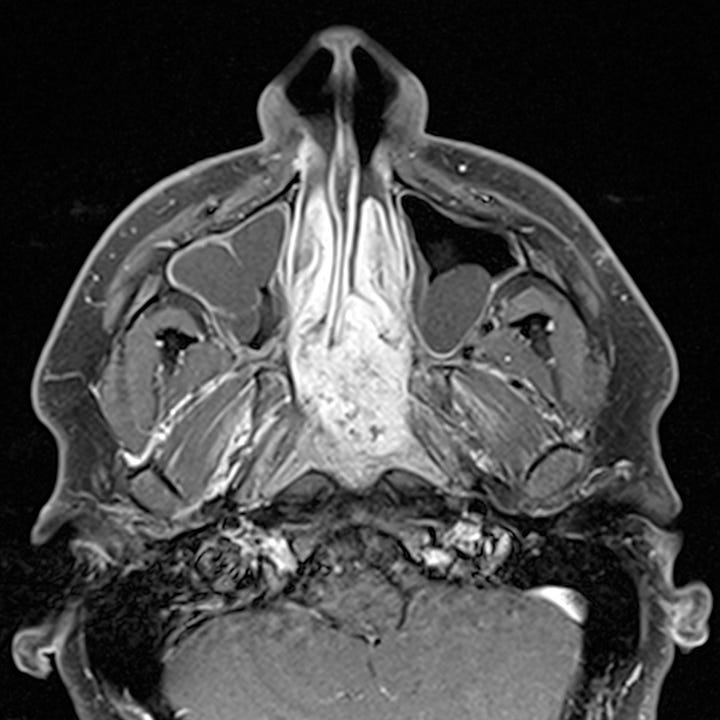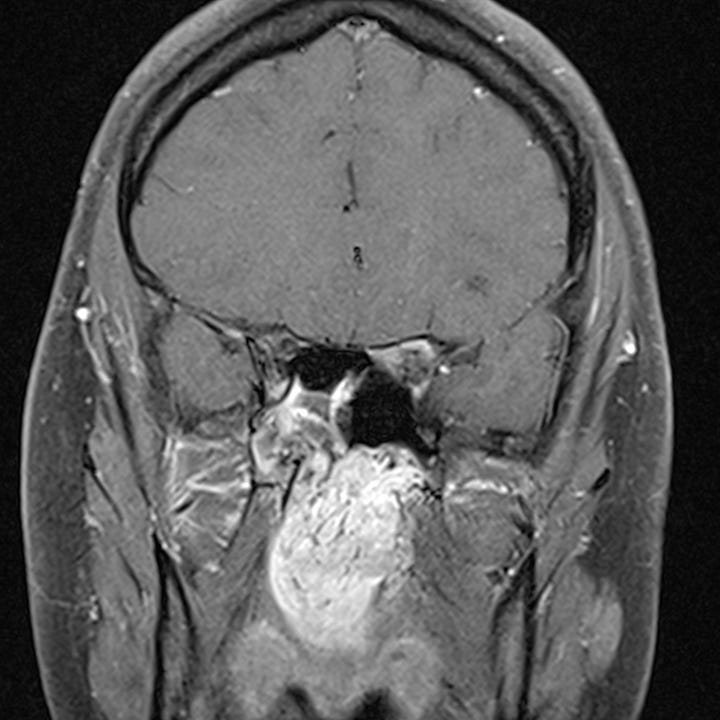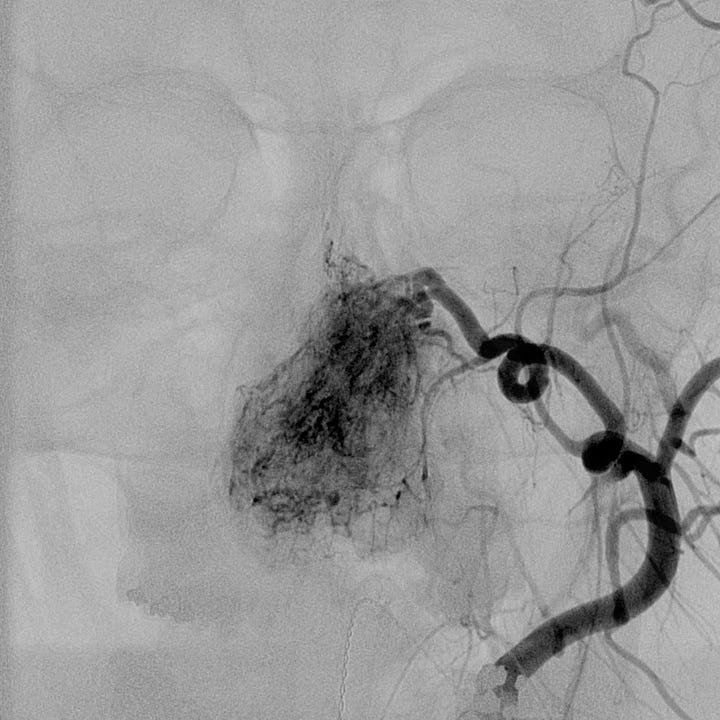Juvenile nasopharyngeal angiofibroma (JNA) is a benign, highly vascular tumor seen in prepubertal and adolescent males. This may reflect the fact that the cells of JNAs express androgen receptors. These tumors arise from the walls of the pterygopalatine fossa and are locally invasive; extension into the maxillary and ethmoid sinuses is common, and intracranial involvement can be seen.
Patients present with nasal obstruction, epistaxis, facial deformity, anosmia, and headache. Examination reveals a pale, reddish-blue mass in the posterior nasal cavity.
CT demonstrates a lobulated, enhancing, soft tissue mass centered at the sphenopalatine foramen, causing local bony remodeling rather than permeation. MRI shows a characteristic salt-and-pepper appearance of intratumoral vascular flow voids. Arterial supply is almost exclusively from the ipsilateral internal maxillary or ascending pharyngeal arteries. Treatment is embolization followed by definitive resection or radiation therapy if resection is not possible.




Juvenile nasopharyngeal angiofibroma. The posterior left nasal cavity is filled by an expansile soft tissue density mass centered at the left sphenopalatine foramen with extension into both sides of the posterior nasal cavity. MRI, which shows the salt-and-pepper appearance of vascular flow voids, and external carotid artery angiogram confirm the highly vascular nature of the mass and its supply via an enlarged internal maxillary branch of the left external carotid artery.



